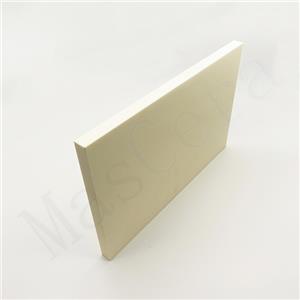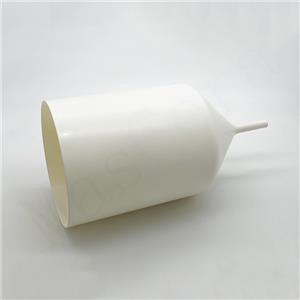How are ceramics used in electronics?
In recent years, benefiting from the popularization and development of communications, computers, electronic meters, household appliances and digital circuit technologies, the market demand for electronic ceramic components is increasing. In 2014, the global electronic ceramic market was worth US$20.59 billion and is expected to reach US$134.6 billion in 2024.
Electronic ceramics have excellent properties such as high temperature resistance, good heat dissipation, high reliability, and light weight. They have the incomparable advantages of traditional materials. Electronic ceramics have already became an indispensable basic material for the manufacture of electronic components.
Electronic ceramics can be divided into five categories according to their functions and uses: insulating ceramics, capacitor ceramics, ferroelectric ceramics, semiconductor ceramics and ion ceramics.
Insulation device ceramic
Electronic ceramics have excellent electrical insulation properties and is used as electronic ceramics for structural parts, substrates and casings in electronic equipment and devices. Insulation device ceramics includes various insulators, coil bobbins, electronic tube holders, band switches, capacitor support brackets, integrated circuit substrates and packaging shells, etc.
The basic requirements for this type of electronic ceramics are low dielectric constant, low dielectric loss tan, high insulation resistivity, high breakdown strength, and good dielectric temperature and frequency characteristics. In addition, higher mechanical strength and chemical stability are also required.
Capacitor ceramics
Electronic ceramics can be used as dielectric materials for capacitors. According to the different ceramic materials, ceramic capacitors can be divided into low-frequency ceramic capacitors and high-frequency ceramic capacitors. Classified by structure, it can be divided into wafer capacitors, tubular capacitors, rectangular capacitors, chip capacitors, through-core capacitors, etc.
Ferroelectric Ceramics
Using its piezoelectric properties can be made into piezoelectric devices, which is the main application of ferroelectric ceramics, so ferroelectric ceramics are often called piezoelectric ceramics.
The pyroelectric properties of ferroelectric ceramics can be used to make infrared detectors, which have important applications in temperature measurement, temperature control, remote measurement, remote sensing, and even biology and medicine. Typical pyroelectric ceramics include lead titanate (PbTiO3) and so on.
Using the strong electro-optical effect of transparent ferroelectric ceramic PLZT, new devices such as laser modulators, photoelectric displays, optical information storage, optical switches, photoelectric sensors, image storage and displays, and laser or nuclear radiation protective glasses can be made
Semiconductor Ceramics
Electronic ceramics with semiconducting crystal grains and insulating (or semiconducting) grain boundaries through semiconductorization measures, thereby presenting a strong interface barrier and other semiconductor characteristics.
There are many types of semiconductor ceramics, including various negative temperature coefficient thermistors made from the nature of the crystal grains in semiconductor ceramics; semiconductor capacitors made from the nature of grain boundaries, ZnO varistors, and BaTiO3 series positive temperature coefficient thermistors Resistors, CdS/Cu2S solar cells; and various ceramic humidity-sensitive resistors and gas-sensitive resistors made of surface properties.
Ionic Ceramics
Electronic ceramics with fast ion conductivity. It has the characteristics of fast delivery of positive ions. The typical representative is β-Al2O3 porcelain. The ionic conductivity of this kind of ceramic can reach 0.1/(ohm·cm) at 300℃, which can be used to make more economical solid battery with high energy ratio, and can also make slow discharge capacitor with high energy storage density. It is a material that helps solve energy problems.




